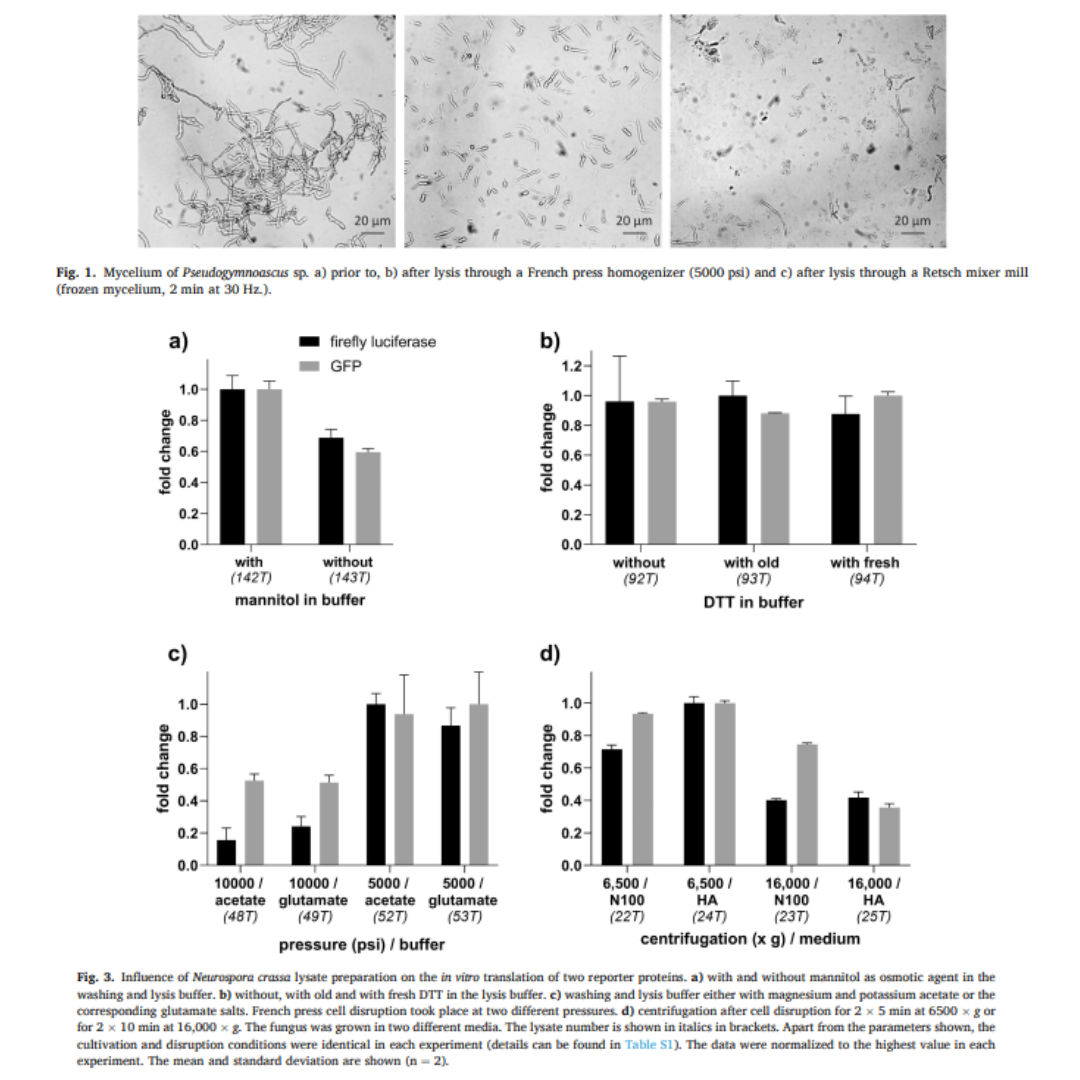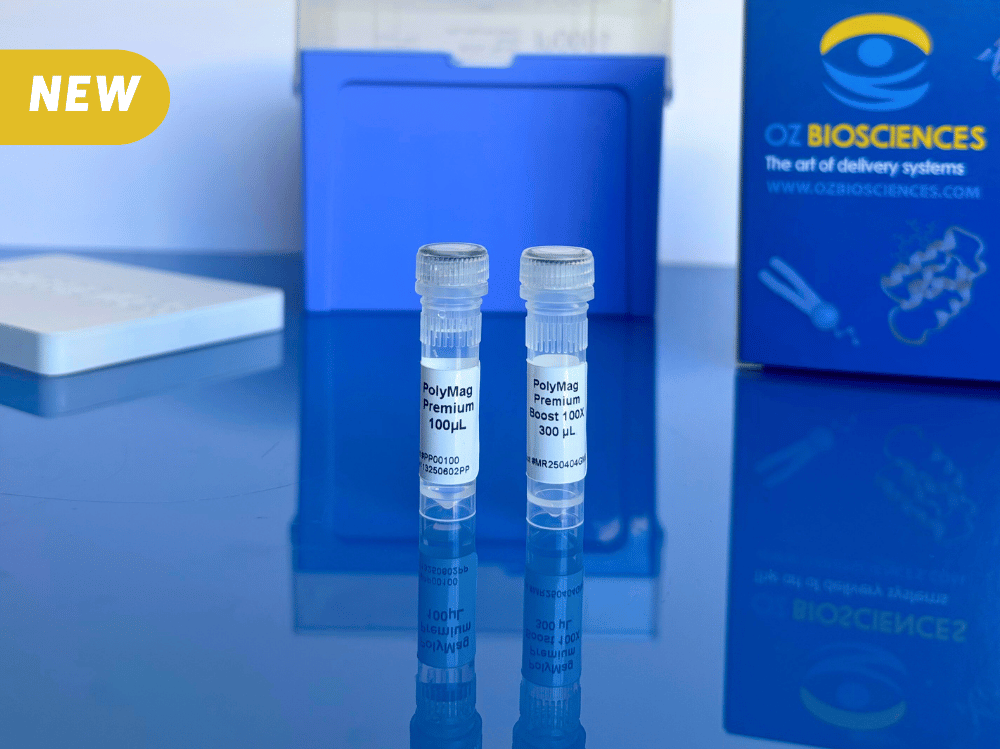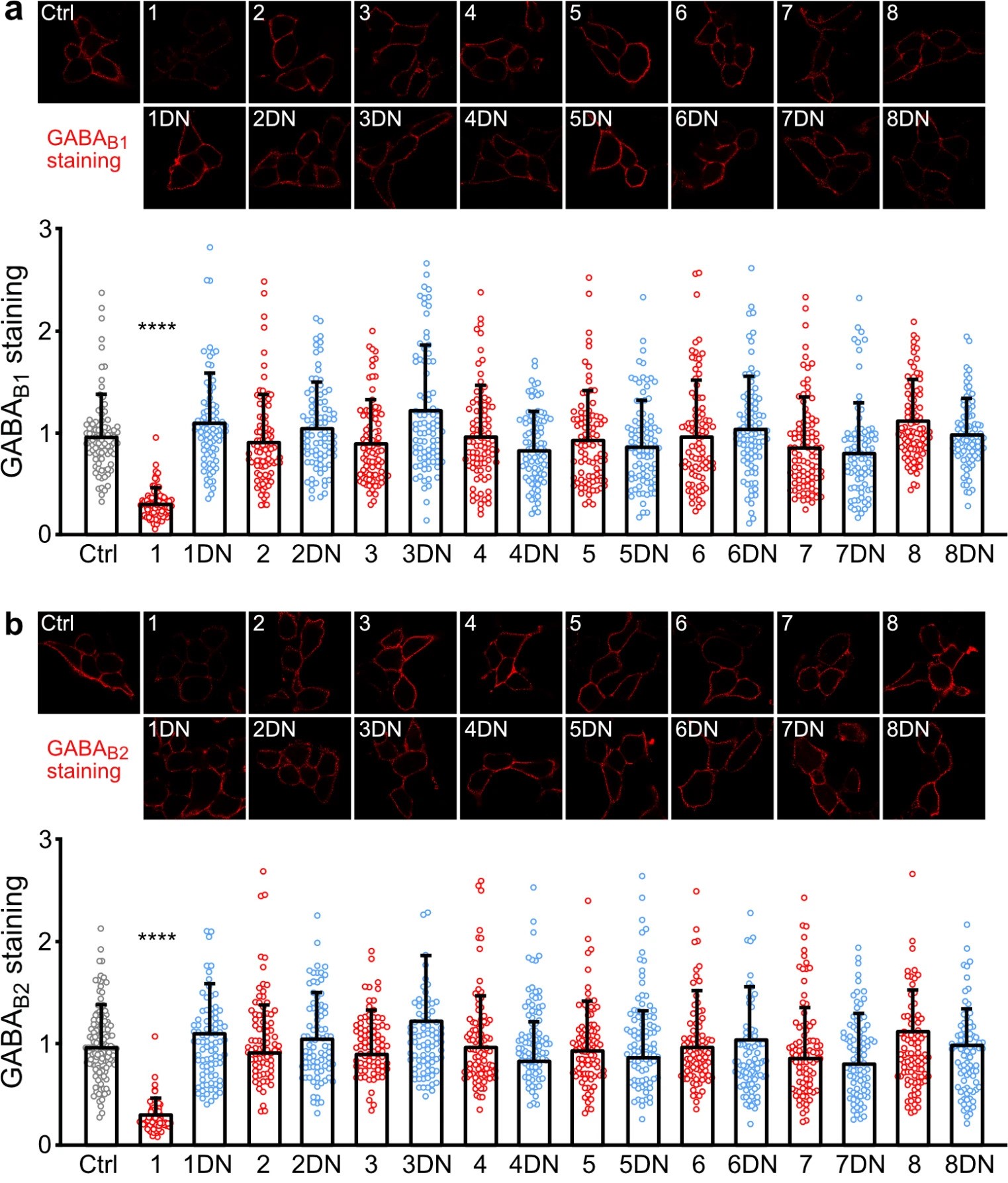BLOG > Publications & Citations > Development of cell lysates from filamentous fungi for cell protein synthesis

Authors: Stephanie Friedrich et al.
Source: Enzyme and Microbial Technology, Volume 185, 2025, 110588, ISSN 0141-0229.
We are delighted to share insights from a recent study entitled "Development of translationally active cell lysates from different filamentous fungi for application in cell-free protein synthesis" published in Enzyme and Microbial Technology by Stephanie Friedrich et al:
"There is an enormous potential for cell-free protein synthesis (CFPS) systems based on filamentous fungi in view of their simple, fast and mostly inexpensive cultivation with high biomass space-time yields and in view of their catalytic capacity.
In 12 of the 22 different filamentous fungi examined, in vitro translation of at least one of the two reporter proteins GFP and firefly luciferase was detected. The lysates showing translation of a reporter protein usually were able to synthesize a functional cell-free expressed unspecific peroxygenase (UPO) from the basidiomycete Cyclocybe (Agrocybe) aegerita.
For the most promising candidate Neurospora crassa, the influence of different conditions of cultivation and lysate preparation on in vitro translation of the reporter proteins was investigated and optimized. In general, the greatest improvements in the translational activity were achieved by the choice of the growth medium, the addition of organic nitrogen being most beneficial. Optimizing the culture and preparation conditions of the N. crassa platform improved protein yield of the original lysate by a factor of 25 for firefly luciferase and 17 for GFP, respectively. In addition to the reporter proteins, the aforementioned UPO as well as a functional UPO from Aspergillus niger were cell-free expressed using the different lysates from N. crassa.
CFPS with fungal lysates opens the door to expressing UPOs in high throughput and in parallel, for example to optimize synthesis conditions or adapt catalyst properties. The presented method proves the general potential of fungal lysates for application in cell-free syntheses."
Congratulations to all authors for this great article.
Our GFP mRNA was used in this cell-free protein synthesis system based on filamentous fungi.
Read the article See our GFP mRNA







